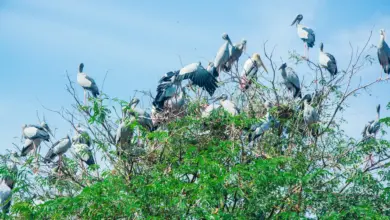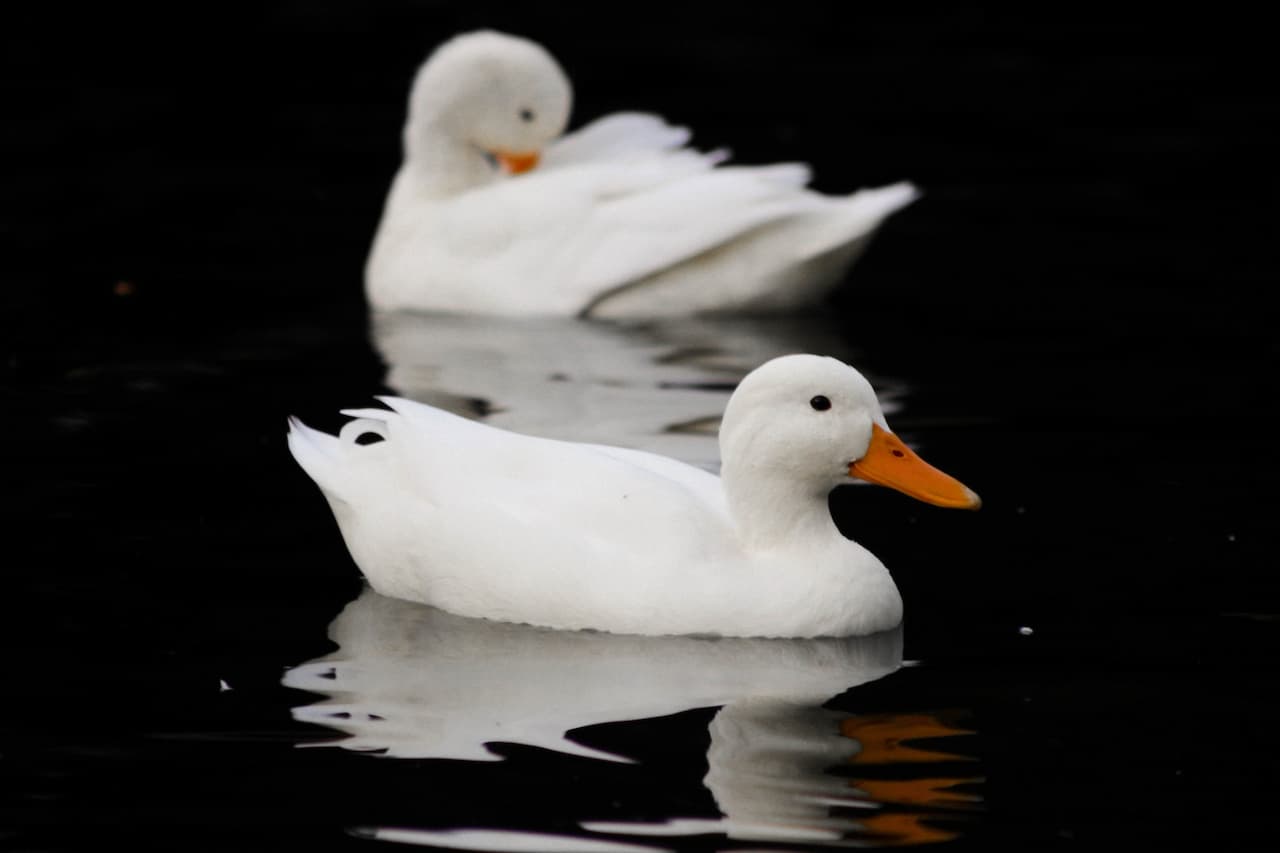Cinnamon Teals
Cinnamon Teals
The Cinnamon Teals, Anas cyanoptera, is a small, reddish dabbling duck found in marshes and ponds of western North and South America.
Description:
The adult male has a cinnamon-red head and body with a brown back, a red eye and a dark bill.
The adult female has a mottled brown body, a pale brown head, brown eyes and a grey bill and is very similar in appearance to a female `Blue-winged Teal; however its overall color is richer, the lore spot, eye line, and eye ring are less distinct. It’s bill is longer and more spatulate.
Male juvenile resembles a female Cinnamon or Blue-winged Teals but their eyes are red.
They are 16 inches (410 mm) long, have a 22-inch (560 mm) wingspan, and weigh 14 ounces (400 g).
They have 2 adult molts per year and a third molt in their first year.
Breeding / Distribution:
The Cinnamon Teals breeding habitat is marshes and ponds in western United States and extreme southwestern Canada, and are rare visitors to the east coast of the United States. Cinnamon Teal generally select new mates each year.
They are migratory and most winter in northern South America and the Caribbean, generally not migrating as far as the Blue-winged Teal. Some winter in California and southwestern Arizona.
The Cinnamon Teals are known to interbreed with Blue-winged Teals.
Subspecies are:
-
- Anas cyanoptera septentrionalium Northern Cinnamon Teal breeds from British Columbia to northwestern New Mexico, and they winter in northwestern South America.
-
- Anas cyanoptera tropica Tropical Cinnamon Teal occurs in the Cauca Valley and Magdalena Valley in Colombia.
-
- Anas cyanoptera borreroi Borrero’s Cinnamon Teal (possibly extinct) occurs in the eastern Andes of Colombia with records of apparently resident birds from northern Ecuador.
-
- Anas cyanoptera orinomus Andean Cinnamon Teal occurs in the Altiplano of Peru, northern Chile and Bolivia.
- Anas cyanoptera cyanoptera Argentine Cinnamon Teal occurs in southern Peru, southern Brazil, Argentina, Chile, and the Falkland Islands.
Diet / Food:
These birds feed by dabbling. They mainly eat plants; their diet may include mollusks and aquatic insects.
Feeding Ducks …
We all enjoy ducks and many of us offer them food to encourage them to come over and stay around – and it works! Who doesn’t like an easy meal!
However, the foods that we traditionally feed them at local ponds are utterly unsuitable for them and are likely to cause health problems down the road. Also, there may be local laws against feeding this species of bird – so it’s best to check on that rather than facing consequences at a later stage.
- Foods that can be fed to Ducks, Geese and Swans to survive cold winters and remain healthy when food is scarce in their environment.
Please note that feeding ducks and geese makes them dependent on humans for food, which can result in starvation and possibly death when those feedings stop. If you decide to feed them, please limit the quantity to make sure that they maintain their natural ability to forage for food themselves – providing, of course, that natural food sources are available.
Copyright: Wikipedia. This article is licensed under the GNU Free Documentation License. It uses material from Wikipedia.org … Additional information and photos added by Avianweb.
Relevant Resources
Please Note: The articles or images on this page are the sole property of the authors or photographers. Please contact them directly with respect to any copyright or licensing questions. Thank you.



